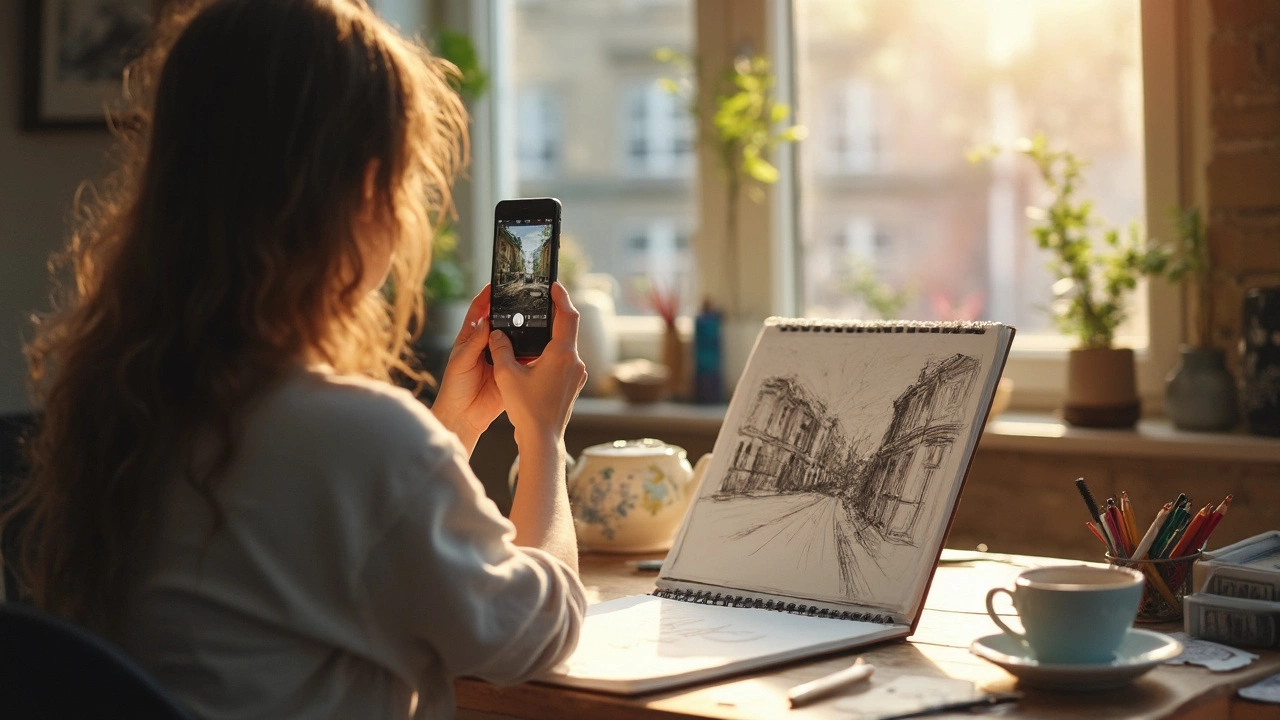Scan Drawings: Fast, Easy Ways to Digitize Your Art
If you have a stack of sketches, watercolor washes, or ink doodles, turning them into digital files is easier than you think. A good scan lets you share work online, back it up, and even print larger copies without losing detail. Below are the basics you need to get clear, crisp scans without spending a fortune.
Pick the Right Tool for the Job
Most people start with a flat‑bed scanner you already own. Look for a model that offers at least 600 dpi for line work and 1200 dpi if you want fine texture or pigment detail. If you only have a phone, use a scanner app that lets you adjust exposure and focus – make sure the camera is steady and the lighting is even.
For larger pieces, a portable sheet‑fed scanner can handle up to A3 size, but a DSLR on a copy stand often gives the best quality. The key is a flat, non‑reflective surface and consistent lighting from the sides, not the ceiling.
Set Up Your Scan for Best Results
First, clean the glass. Dust or fingerprints show up as gray spots that are hard to erase later. Place the drawing face‑down, align it with the edges, and use the preview function to confirm the framing.
Choose a colour mode that matches your work. Black‑and‑white or grayscale works for pencil and ink; colour mode is essential for watercolours or mixed media. Set the resolution to 300 dpi for web use, 600 dpi for prints, and 1200 dpi for archival copies.
If your scanner has a “descreen” or “remove moiré” option, turn it on for printed sources. Some scanners let you adjust contrast and brightness before saving – increase contrast just enough to make lines pop, but avoid crushing subtle shading.
File Formats and Naming
Save the master copy as a TIFF or PNG – both keep all the pixel data without compression artifacts. JPEG is fine for quick sharing, but set the quality to 90 % or higher to avoid visible compression.
Give each file a clear name: "ArtistName_Year_Title.tif". Consistent naming makes it easy to locate files later and helps search engines understand your content if you upload them to a portfolio site.
Quick Post‑Processing Tips
Open the scan in a free editor like GIMP or an online tool. Use the Levels command to tighten whites and blacks – this sharpens line work without losing detail. If the background looks grey, a simple “Select by Color” and fill with white can clean it up.
For colour drawings, check the colour balance. A slight shift toward cool tones often corrects the warm cast that glass can introduce. When you’re happy, export a web‑ready version (JPEG at 80 % quality) and a print‑ready version (PNG or TIFF at full size).
Finally, back up the files. Store one copy on an external drive and another in a cloud service. This way your sketches stay safe even if your computer crashes.
Scanning drawings doesn’t need a studio full of equipment. With a decent scanner, a few settings tweaks, and a bit of post‑process love, you can create digital files that look as good as the originals – ready to share, sell, or archive for years to come.

28 May 2025
Wondering if you can snap a photo of your sketch and turn it into digital art? Absolutely—it’s easier than you think. This article walks you through picking the right tools, snapping the best shot, and making your artwork digital-ready. You’ll learn simple tricks to keep your art sharp and colors true. The tips are practical whether you have fancy tech or just a smartphone.
Continue reading...
